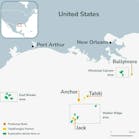Protests erupting last month in Iraq and Lebanon reveal cracks in the foundation of hegemony Iran has been laying in the Middle East. To the dismay of Saudi Arabia and other Sunni regimes, the Islamic Republic has coopted Shiite groups not only in the countries now unsettled by protests but also in Syria and Yemen, in clear and seemingly effective pursuit of regional domination.
Protesters have other aspirations.
The protests
Demonstrations began Oct. 25 in Iraq, mostly in Baghdad and the majority-Shiite southern part of the country. Grievances are local: corruption, unemployment, poor public services. According to the Associated Press, governmental responses to the demonstrations increased in ferocity after an Oct. 26 visit to Baghdad by Gen. Qassim Soleimani, head of Iran’s Quds Force, extraterritorial unit of the Islamic Republic Revolutionary Guard Corps. At this writing, more than 275 Iraqi demonstrators were reported to have been killed, some by rooftop snipers of militias backed by Iran.
“The protesters have increasingly directed their anger at Iran, which has close ties to the government, Shiite political factions, and paramilitary groups,” the AP reported on Nov. 4. Protesters burned an Iranian flag in Baghdad. In the Shiite holy city of Karbala, where 18 people were killed on Oct. 29, demonstrators outside the Iranian consulate earlier had chanted, “Iran, out, out!”
So far, anti-Iranian anger has been less brazen in Lebanon, where Iran’s main proxy, Hezbollah, and its allies won a majority in elections last year. As in Iraq, a local issue sparked the protests: a proposed tax on an online service that brought people already hurt by a foundering economy into the streets of several cities on Oct. 17. Demonstrations were largely peaceful until Oct. 29, when Hezbollah supporters swinging batons routed protesters from a camp in Beirut. The protesters won part of their fight for change, though, when Prime Minister Saad Hariri announced his resignation the same day, saying, “I have hit a dead end, and it is time for a big shock to confront the crisis.”
Whether Hezbollah ordered the attack was unclear. But its leader, Hassan Nasrallah, had supported the government against the protesters, many of whom are Shiite. That move might prove fateful. Strained financially by participation in the Syrian civil war and by diminished contributions from its heavily sanctioned patron in Tehran, Hez-bollah can’t buy as much local support as it once did with patronage jobs and services. Shiites thus are aligning with other hard-pressed Lebanese against a government—and by association Hezbollah—they see as corrupt and ineffective. In a striking expression of splintered allegiance, Shiite demonstrators burned Hezbollah offices in Nabatieh, a party stronghold in southern Lebanon.
To Hanin Ghaddar, a visiting fellow at the Washington Institute for Near East Policy, the “unprecedented protests” in Iraq and Lebanon show that “Iran’s system for exerting influence in the region failed.” In an Oct. 22 Foreign Policy article, Ghaddar writes, “For the Shiite communities in Iraq and Lebanon, Tehran and its proxies have failed to translate military and political victories into a socioeconomic vision; simply put, Iran’s resistance narrative did not put food on the table.” Iran empowered proxies in both countries with funding and weapons and maneuvered them into positions of influence, he explains. “Today, state institutions in Iraq and Lebanon have one main job: Instead of protecting and serving the people, they have to protect and serve Iranian interests.” And the people are protesting.
Shifting balance
Especially after Hezbollah’s political victory last year, Iranian expansionism seemed irrepressible. If the Iraqi and Lebanese protests do signal failure of the Iranian program, the always-fluid Middle Eastern power balance somehow will shift. And Iraq, with its world-class oil production, and Lebanon, with its hope for a share of the East Mediterranean gas bonanza, face new instability.
In both countries, however, protesters from disparate groups act united by shared interests, however desperate. Is enforced sectarianism thus giving way to constructive nationalism?
There’s always hope.
